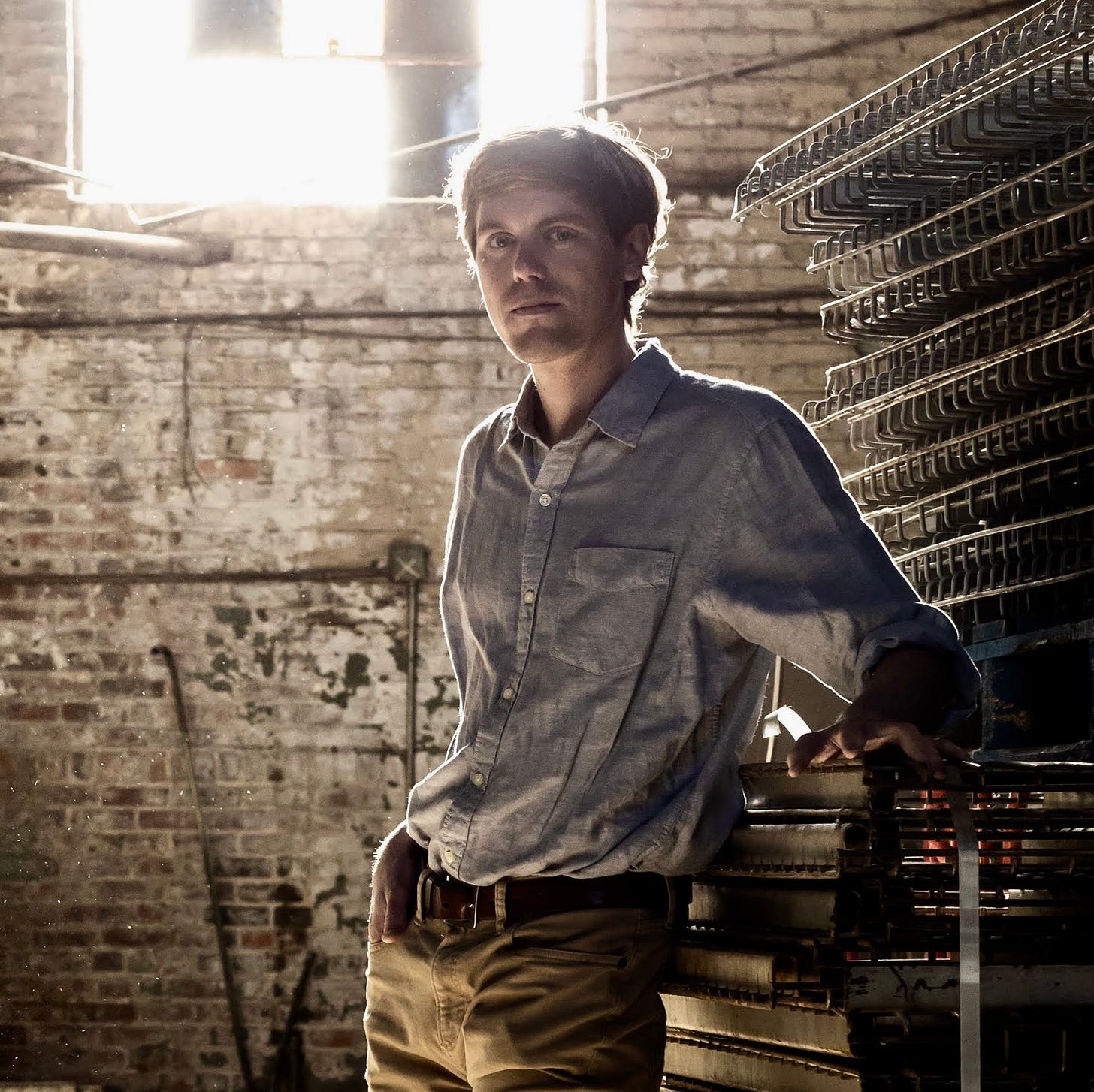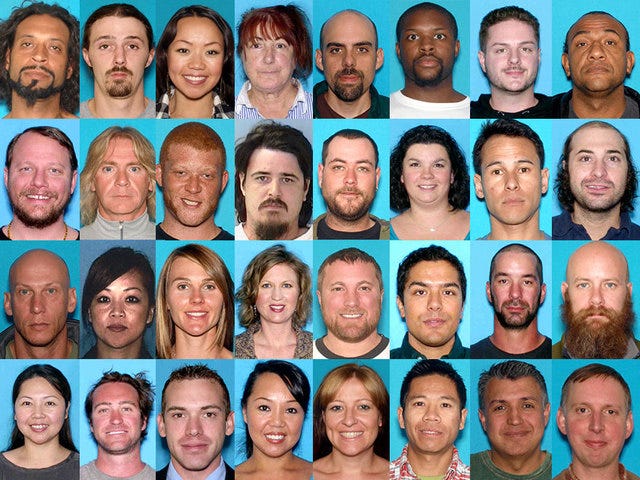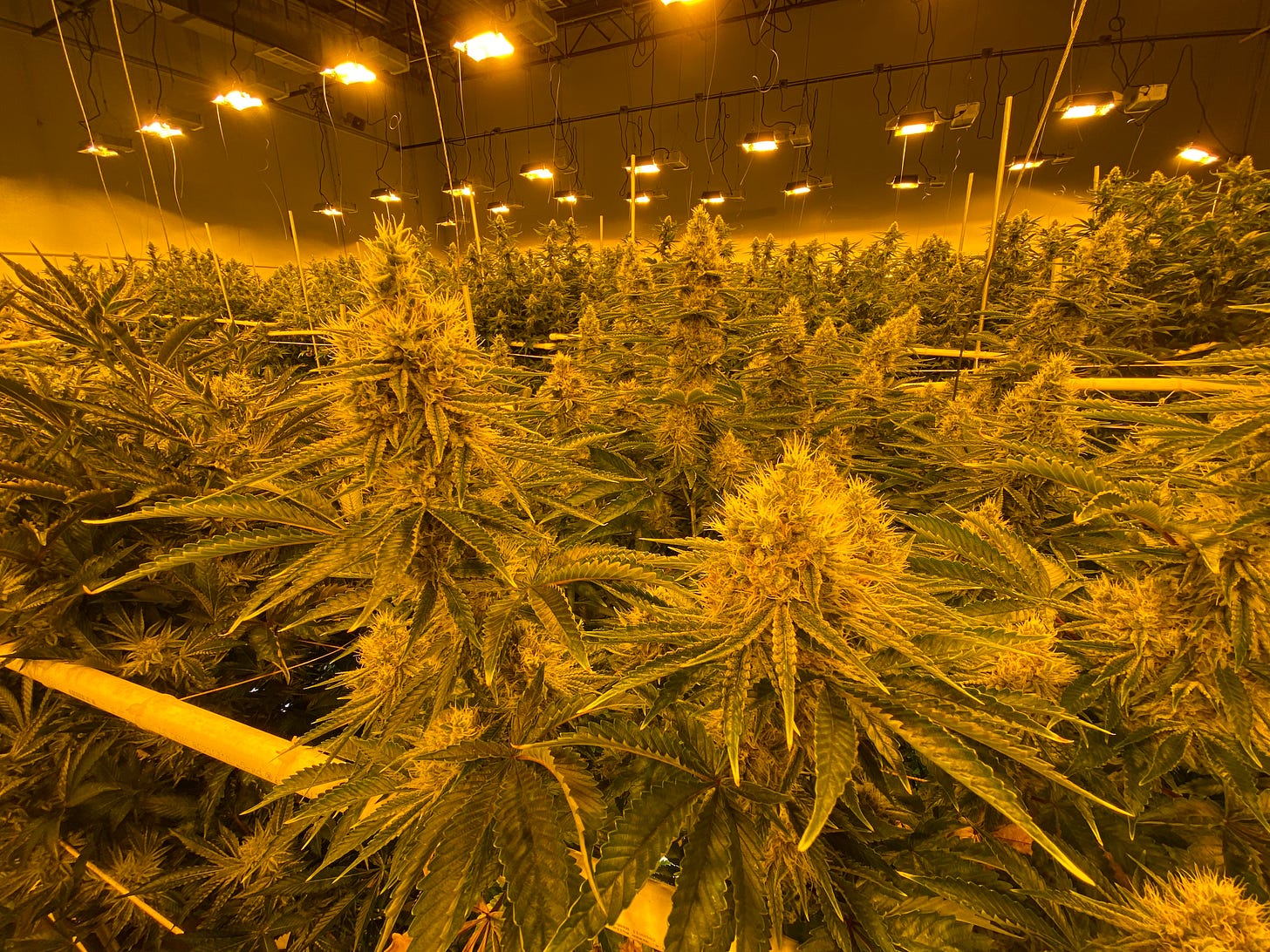Just when I thought I was out, they pull me back in
The legal cannabis market offers a back door for the illicit market to thrive

***A stylistic note before we begin. There are many phrases that refer to the illegal cannabis market: black market, traditional market, legacy market, illicit market, unlicensed market, and so on. Some are considered offensive nowadays, like the term “black market,” which carries a significant stigma. I tend not to use that one, as you may have noticed. All of those terms mean the same thing and will be used interchangeably throughout this piece and also forever and ever, amen.***
I had been at the farm for enough time that I was startled to see a car I hadn’t been expecting rumbling up the dirt driveway. I was in Trinity County, California earlier this year, putting in time at a legal cannabis farm. After just a week there, I quickly learned that one doesn’t just show up places. One needs to be invited. That’s why all of the driveways in this heavily wooded, mountainous, and rural area are un-paved, many riddled with intentional potholes that could blow a tire or crack an axle if encountered at the wrong speed. Usually, there is a locked gate. Dogs are requisite, as are guns—only one of those will be visible, though. Often, there are cameras. To anyone with half a brain, the message is clear: no trespassers. The definition of that term is broad yet finite at the same time.
I felt lucky to have been granted an invite. For whatever reason, it meant that someone decided I—a journalist—could be trusted, especially considering the fact that there were illegal sales being conducted on the farm, as well as legal. Three men emerged from the car and said, “Hello!” to me as I continued to quietly pack the bong I was holding. Their accents indicated they were from somewhere in the Caribbean.
After chatting with them for a few minutes, I learned they were all Jamaican, in town from New York. We discussed our favorite Jamaican beef patty in the city—Kingston Tropical Bakery in the Norwood section of the Bronx—and they asked to speak to the farmer, a man they have done business with for over a decade. I pointed inside, where, just a few minutes later, many thousands of dollars along with dozens of pounds of pot changed hands. The merchandise was packed into their car, and the men headed back to New York. That, dear readers, was not a legal cannabis deal.
Despite cannabis being legal for adult-use consumption in California, where I live, I’d be lying if I said I only bought licensed bud. Thanks to years covering the industry and its culture, I now have many friends and contacts who work in all segments of the cannabis industry, including segments that are not exactly legal. This may seem surprising to those on the outside. What’s the point of legalization if not in part to eradicate and transition so-called black markets? The answer, which is admittedly not a satisfying one, is that the process of moving a shadow industry into the light of day is a long and complicated one. Many farmers and businesses straddle the line between licensed and not, using tips, tricks, and network from the legacy market days while also taking advantage of the legal cover and other benefits that going legit offers.
At this stage in legalization—where several states have removed all cannabis prohibition, many states languish somewhere in-between, and the federal government has so far kept it illegal—the licensed market unintentionally provides cover for the unlicensed market to thrive. One clear avenue for this is the market opportunity that seemingly magically appears when one state allows legal cultivation and sales and a neighboring state doesn’t.

“There's actually an economic term for it,” says Chris Walker, an investigative journalist who recently released a podcast about a notorious Colorado weed bust called The Syndicate. “It's called arbitrage, which is when you can take advantage of the price discrepancies in different markets for the same product.”
Arbitrage isn’t a term I have heard since my working-in-finance days (God, help me), so it tickled me a bit to be applying things from my squarer life to work assignments now. Walker’s podcast describes a group he has ominously named The Syndicate, which refers to a group of college friends and their larger network of family and friends that formed an unlicensed cannabis growing and distribution ring that stretched from Colorado to Minnesota. They were eventually busted in 2015 in what was at the time the largest weed bust in the state’s history.
The story is salacious as hell—pot is trafficked by skydiving (image up top), colorful characters with monikers like Shifty Nick or The Enforcer abound, and, perhaps most fascinatingly of all, there is the fact that the group operated more or less in the open, taking cover in the disorganized legal market.
“That’s where this group was getting its margins from. All of its revenue is taking legal pot or taking pot from the illegal market in Colorado and then selling it in another state where there's only a black market,” Walker says. This not only provides another opportunity for the sellers to peddle their wares but also drives up prices where weed still isn’t legal, resulting in greater profits.
The numbers support these market movements. According to a report by BDS Analytics (the full report is behind a paywall), California, which boasts the world’s largest legal cannabis market, also boasts a legacy market that clocks in at around $8.7 billion dollars a year. The legal market is estimated to be around $3.1 billion.
The reasons that drive people to purchase from the legacy market are many. In California, there’s the fact that Prop 64 allows for local control, which means that individual municipalities can ban sales and cultivation, despite being legal in the wider state. The BDS Analytics report found that for every 35,137 Californian adults, there’s only one dispensary where they can legally get recreational cannabis. In Oregon, it’s one for every 5,567 adults, and in Colorado, one for every 4,240 adults. And, of course, there is the issue of taxes. If one buys from the legacy market, they will not have to pay tax. These are some of the biggest drivers keeping the illicit markets not only alive but thriving.

Less explained by these numbers are the individual motivations for getting involved in illicit cannabis growing and selling, particularly at the lower levels. Sure, the money is alluring and I completely empathize with growers saying, “fuck the government,” especially after decades of being hunted down by it. But if you’re not the head of, say, a crime syndicate, what’s in it for you besides making someone else rich and risking serious prison time? What I like about The Syndicate podcast, in particular, is its focus on the human experience in the so-called black market.
Those individual and varied experiences are exactly what struck Walker, too, and what caused him to dig into the story of The Syndicate. “There are a lot of people involved with this group, so their personalities and motivations are quite diverse,” he says when I mentioned it was interesting to hear individual Syndicate members he interviewed wrestle with their morality in real-time. It was clear, throughout most of their testimonies, that they wanted Walker to know they were good people at the end of the day. That their motivations should be easily recognizable to other humans—quick profits, an exciting lifestyle, and, in some cases, an opportunity to spread genuine love of and belief in the plant, among other things. That maybe, when presented with the same options, other seemingly reasonable people would also choose to get mixed up in something so clearly risky.
“There was a lot of press coverage of this group in 2015, but everyone's name was kind of just plastered on the Internet and there was no differentiation between everyone and why they were involved. So, that's why some people agreed to talk to me—they wanted to get their side of the story out,” Walker says.
“There was Mike, for example. He had this real spiritual connection to cannabis and you know, like, paddling along the Ganges River wild drinking weed milkshakes, and he was like a total hippie,” Walker recalls. “It’s just really interesting, people's approach to this. It's not all just, like, people out to make money. Some people had a real personal connection with this plant.”
“And, yes, some of them did really struggle with the morality of it,” he adds. But, in episode five, Walker digs into cannabis’ history and the fact that “you can definitely make a case that the government has been overzealous in its enforcement. Just, like, the prosecution of this substance that's been used by civilizations for thousands of years,” he says.
Both Walker and I think that enforcement against cannabis is inherently hypocritical, and we both have come across many (ourselves, included) who are very strongly of the belief that cannabis never should have been illegal, to begin with. I can only definitively speak for myself, but I have never felt that using, growing, or distributing cannabis is inherently immoral, which is why I was struck with people wrestling with their own decisions in such a way.
“It’s not like we're dealing in other substances like opioids, which are causing this horrible epidemic throughout the United States,” Walker says. “We're dealing with cannabis. So, yeah, I do try to kind of highlight people's wrestling with that question on the show.”

As for the eventual eradication of the unlicensed cannabis market, what can be done? Well, for starters, the obvious answer is broad legalization across the United States, which will eliminate arbitrage opportunities, reduce or eliminate interstate trafficking, and provide a platform for standardizing cannabis regulations and oversight throughout the country. But governments need to implement fast-acting and smart strategies in order to combat the growth of the illicit market head-on.
“So, the best example we can look to is Canada, which legalized cannabis in 2018, and that hasn’t eliminated the black market,” Walker says. “Far from it. The reason for that is, like a lot of states, Canada has left some of the licensing to local municipalities and some of them have been extremely slow in rolling out dispensary licenses, like in Quebec. So, even if pot is legal, if you're a consumer or a buyer and there's just no legal place to get it from, then you're still going to go to the black market,” he continues.
Even still, though, the issue of taxation exists. If one can get the product for cheaper on the legacy market, why wouldn’t they, even if it’s legal everywhere? Walker agrees that taxation mandates need to take into account what street pricing for cannabis reflects. “The prices at legal pot shops need to be low enough that they're competitive with the black market,” he says. This is an issue in most legal states—legal cannabis has created a surplus in supply, driving down legal and illegal prices, but taxation in the legal market similarly causes the final prices to soar. I know that, for me, that’s one reason I sometimes buy from the legacy market. At the end of the day, the issue of convenience and availability that the legal market provides more and more as it continues to grow may win out over any other forces.
“This is not going to disappear overnight, even with the best set of circumstances,” Walker says of the legacy market. “But there are things that we can do to speed up the decline of the black market. I predict it already is on the decline, overall—you see that through the growth of the regulated industry, which is by some accounts growing as much as 33 percent every year in North America. So, all of those sales are cutting into the black market. How steep is that decline? I'm not sure. But hopefully knowing about stories such as the syndicates will help make it much faster.”
In the meantime, though, most of us will continue to watch the illicit cannabis market from the outside, occasionally getting a peek in when we get a new plug or hear of a large drug bust on the news. At the very least, despite the harm it causes and the very real money it makes people who may not have any other choices, it also provides modern-day mafia stories.
“I mean, even a couple of people in the group that I interviewed joke that, ‘You know, it's just it's so weird to me now being out of it because when I was in it, I was just so consumed by it. But looking back now and talking about it with you and then also with friends, it just sounds like a movie or it sounds like a book,’” Walker says, paraphrasing some of the interviews he conducted. It also sounds suspiciously like a line I heard in a movie this one time, indicating to me that this phenomenon is more a result of the human condition than any kind of creative machination.
He recalls his favorite summation of his subjects’ experiences. “As the main skydiver in my series put it, ‘Once you're in it, it's a fucking blur, dude.’”
Though the podcast hasn’t finished airing in its entirety just yet, most of it is available wherever you choose to listen to such media. Personally, I love The Syndicate. It hits all the right notes: it examines human behavior, provides a salacious criminal underworld story, discusses policy and politics in a measurable and digestible way, and provides a tangible cautionary tale. Check it out here.
One to try

I’m excited to include something brand new in today’s review section! Today, PAX Labs, the vaporizer brand everyone loves to love, announced the launch of its PAX 3 cannabis vaporizer for dry herb and concentrates. According to the brand, it includes a, “sleek and sophisticated new color palette that includes Onyx, Sand, Sage, and Burgundy in a premium matte finish.” I can confirm this is true, having received a sand-colored PAX 3 to try out this past weekend before everyone else. They’re cute, okay? I am so thrilled that smarter and, frankly, prettier design is finally catching in the cannabis world.
Things I like about it, so far, even after a few days of use: you can use dry herb and concentrates in one portable pod! That is kind of insane. Historically, vaporizers come with capabilities for one or the other. Now we can get all sorts of fucked up in multiple ways, just one tool required!
I also appreciate the extended battery life, which now lasts 10 sessions before needing a recharge. Users can control the temperature to manage both flavor and vapor output, with four temperature settings and +/-1° temperature control. Even at the highest setting, I never experienced too-burned bud. Enhanced features include lip presence-based boosting, auto-cooling, and motion-sensing technology. The PAX 3 retails $200 for Basic Kit and $250 for the Complete, which comes with the concentrates capabilities, on PAX.com.
If you haven’t paid to subscribe yet, please consider doing so today! Your support helps to keep this going. Thank you for being here!




